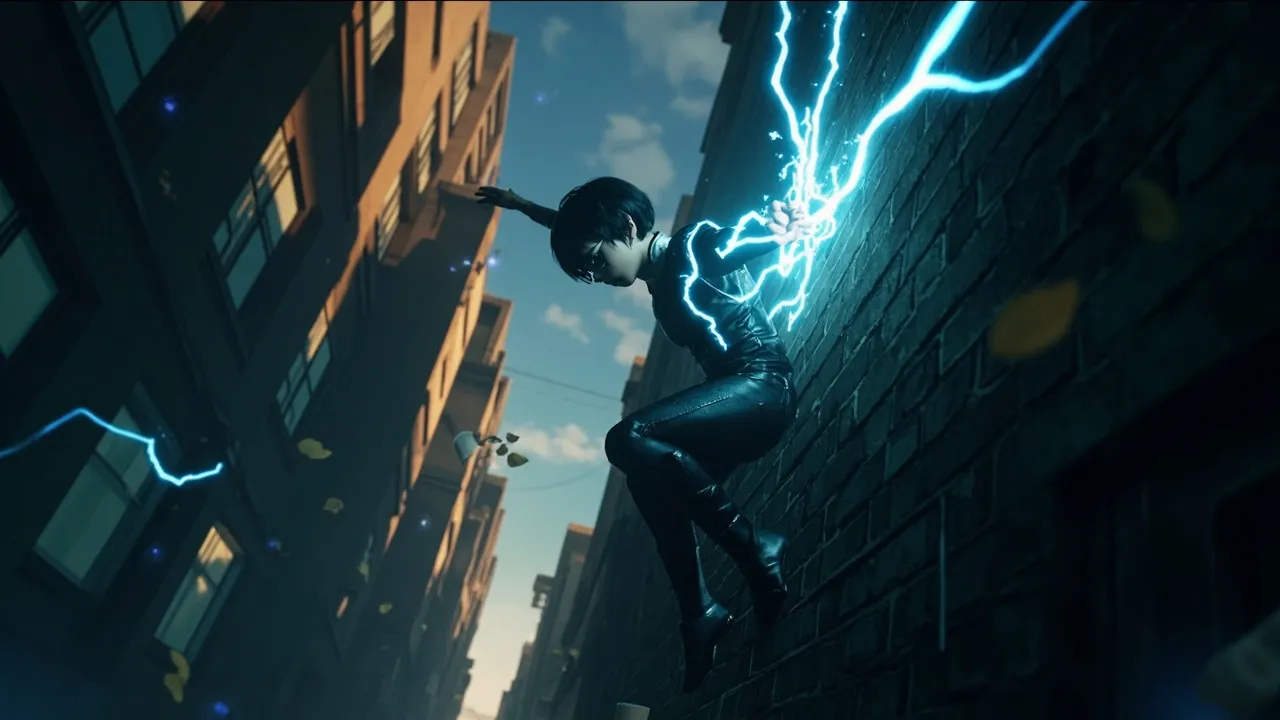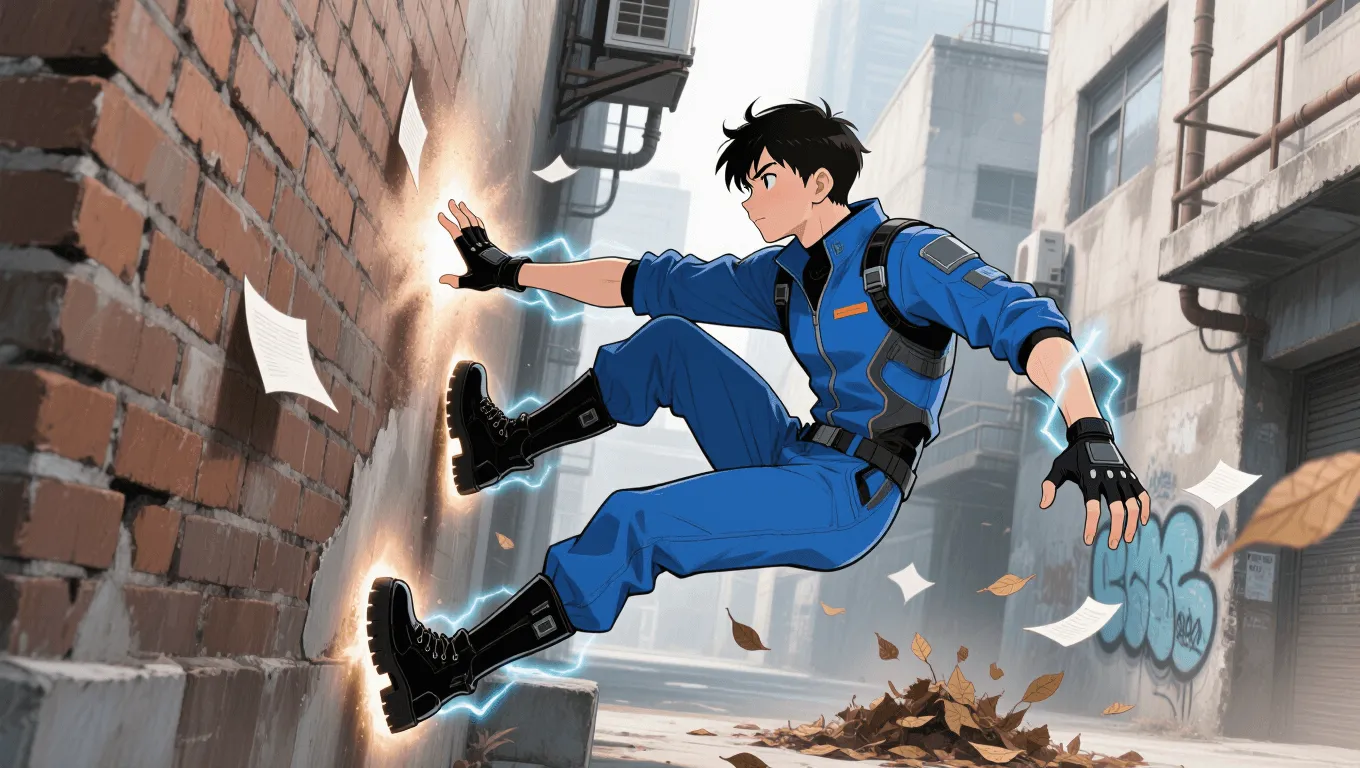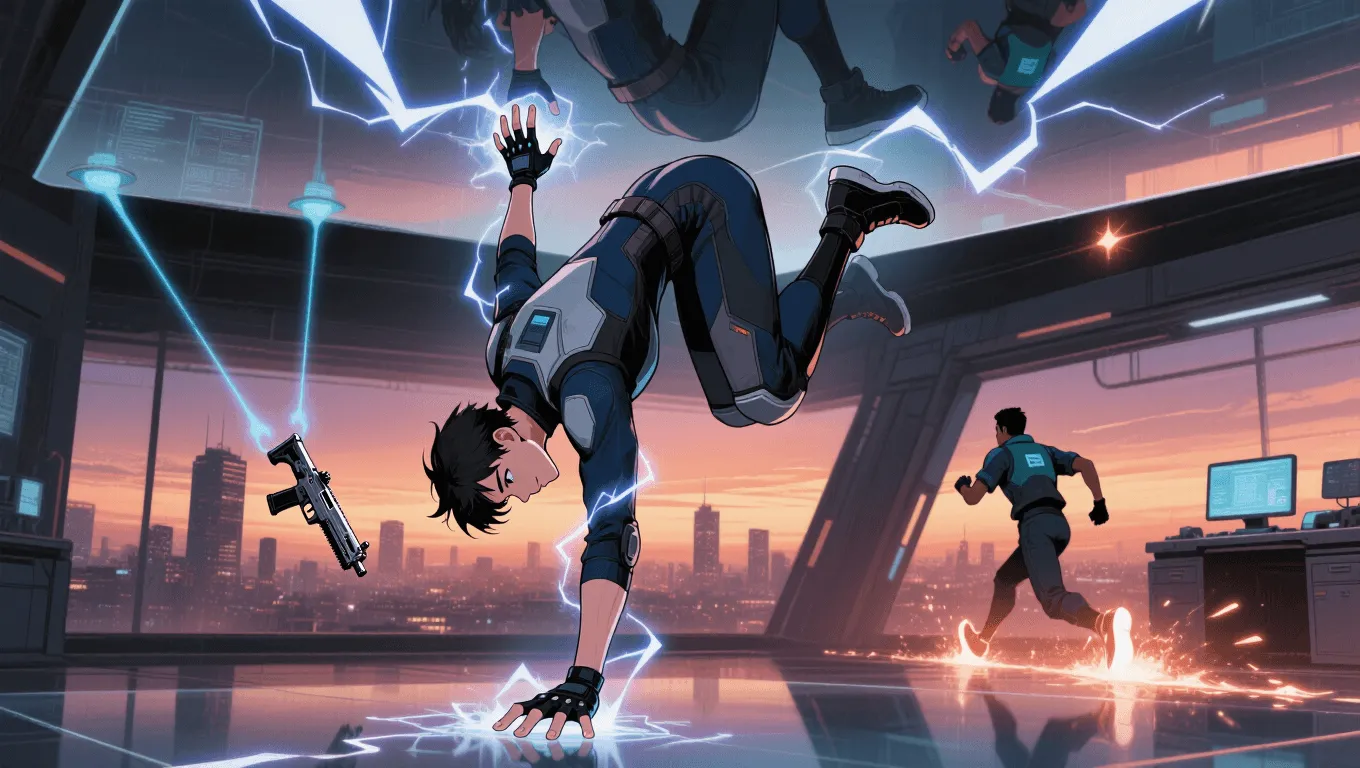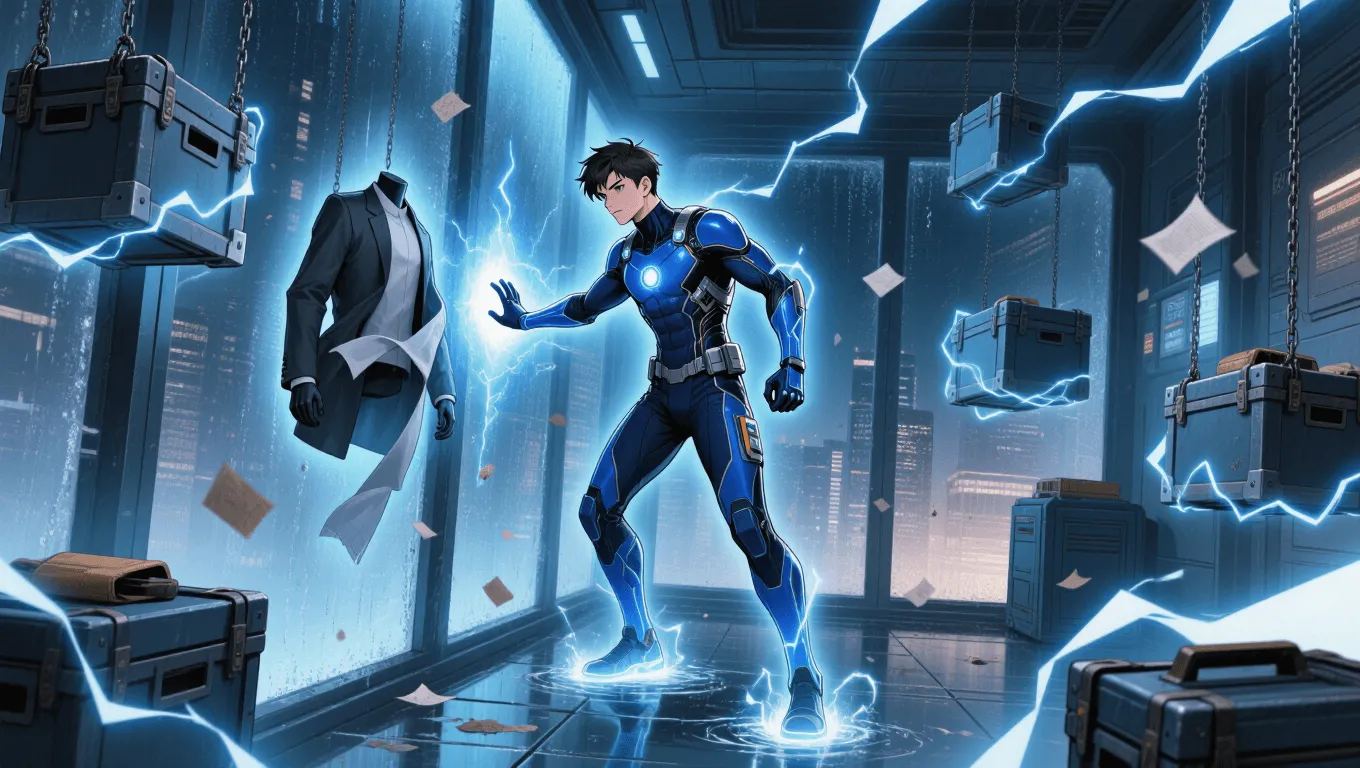Static Cling: Mastering Electrostatic Adhesion

Static Cling Video Demo 🎬
Table of Contents
Static Cling is a superpower that turns ordinary static electricity into a controlled force for adhesion, movement, and subtle manipulation. Within the first moments of learning Static Cling, a user discovers they can generate and shape electrostatic charge on their body or gear to stick to walls, tether objects, and influence lightweight materials. Unlike raw electrokinesis, this ability focuses on electrostatic attraction and repulsion—think balloons on ceilings, but scaled up with precision.
What Is Static Cling
Static Cling is the controlled creation, accumulation, and placement of electrostatic charge to produce adhesion and gentle force effects. Users leverage the triboelectric effect, charge separation, and the Coulomb force to make surfaces attract or resist each other. In practice, this can look like climbing glass as easily as concrete, palming a metal weapon out of a foe’s hand, making an opponent’s boots “glue” to the floor, or dusting a room by pulling all airborne particulates to a single charged sheet.
In the broader world of extraordinary abilities, Static Cling sits between electrokinesis and classic wall-crawling. It does not inherently hurl lightning bolts, but it can nudge, reel-in, and pin with convincing strength where surface area and materials cooperate. For readers exploring related abilities, see the full catalog on the Superpower Wiki, or spark inspiration with our random superpower generator.
Core Abilities of Static Cling
Electrostatic Adhesion
The signature move: generating charge on skin, suit, or boots to adhere to ceilings, walls, and even moving vehicles. By matching the sign and magnitude of charge across two surfaces, the user maximizes electrostatic attraction for stable wall-walking, hands-free perching, and stealthy repositioning.
Charge Anchors and Tethers
By projecting localized patches of charge (on gloves, darts, grapnels, or thrown patches), the user creates electrostatic “anchors.” These anchors pull light objects toward them, stabilize ropes or cables without knots, and can even serve as safety tethers to arrest a fall.
Friction Boost and Slip Control
Static Cling can raise or lower effective friction on contact surfaces. Increasing charge makes shoes “cling” to slick surfaces; decreasing or redirecting charge can reduce sticking when the user needs a quick slip, dodge, or disengage.
Micro-Object Manipulation
Paper, dust, ash, plastic shards, and fabric fibers respond dramatically to electrostatic fields. The user can sweep a room clean, trace airflow patterns by attracting particulates, or yank a key card from a few meters away. These delicate pulls are silent and leave minimal evidence.
Soft-Restraint “Glue” Fields
A low-energy, wide-area charge over a patch of floor can glue boots or loose clothing momentarily. It’s less dramatic than a force field, but perfect for tripping pursuers, stalling a charge, or buying one or two precious seconds in a fight.
Insulator/Conductor Literacy
Advanced users learn to treat the environment like a circuit board. Dry wood, leather, and rubber respond differently than metal, water, or carbon composites. Knowing what to charge—and what not to—makes Static Cling incredibly resourceful.
Application / Tactical Advantages in Combat
Vertical Mobility Without Hardware
Where grappling hooks tangle and suction cups fail, electrostatic adhesion excels. Rapid vertical travel, ceiling ambushes, and silent crossing of glass façades are bread-and-butter moves. In urban chases, Static Cling transforms skylines into three-dimensional highways.
Disarm, Distract, Disable
Metallic or lightweight gear—throwing knives, pistols, magazines, drones—can be nudged off trajectory or tugged just enough to spoil accuracy. A quick palm-swipe can charge a weapon’s grip, making it stick to the user’s hand while feeling slick to an opponent. The same principle can “freeze” holstered gear for a beat.
Crowd Control and Terrain Shaping
A charged tarp becomes a debris magnet, clearing sightlines or creating a slippery, crackling hazard zone. Charging a doorway’s frame can catch lint, paper, and dust, revealing unseen motion through displaced particulates. For riot scenarios, a series of charged mats can slow advances without blunt-force harm.
Stealth and Forensics
Electrostatic dusting highlights footprints, touchpoints, or air leaks. By modulating charge, the user can map drafts and ducts, detect hidden vents, or track microfibers shed by targets. Tactically, it’s surveillance that looks like simple housekeeping.
Low-Energy, High-Uptime Utility
Because electrostatic fields can be maintained with minimal drain—especially when amplified by a suit with capacitive layers—Static Cling is excellent for long missions where power conservation is key. It’s quiet, subtle, and endlessly reusable.
Level: Level 1 🏙️, Level 2 🌇, Level 3 🌃
Level 1 🏙️ — Street-Ready Static
Beginners can charge their palms and boots to climb textured walls, perform short ceiling hangs, and attract or repel very light items (paper, dust, leaves) within arm’s reach. They gain a modest friction boost for sprints and parkour, and can set simple “stick pads” on floors to snag footsteps. Expect occasional misfires on wet surfaces and metals.

Skills at this tier:
-
Basic wall-walking and perching on dry surfaces
-
Particulate attraction for quick cleanups or simple reveals
-
Short-range tug on light plastics and textiles
-
Rudimentary “sticky spot” traps
Level 2 🌇 — Operative’s Toolkit
Intermediate users sculpt charges in precise shapes and gradients. They traverse slick glass, cling to ceilings for minutes, and throw charge anchors up to mid-room distances. They can disarm small weapons by timing a tug as an opponent draws, create friction fields for teammates, and switch cling on and off per limb for acrobatics.

Skills at this tier:
-
Reliable adhesion on smooth surfaces, including moving vehicles
-
Mid-range attraction of light objects; controlled “soft grappling” lines
-
Quick disarms, holster “freeze,” and stagger traps
-
Environmental sensing via dust mapping and airflow tracing
-
On-the-fly friction modulation for mobility or escapes
Level 3 🌃 — Master of Electrostatic Environments
Experts affect rooms, not just hands. They weave multi-surface charge lattices that channel debris like wind, pin multiple targets’ clothing, and anchor heavy equipment with distributed adhesion. With fine control, they can move across rain-slick glass by actively managing runoff and charge bleed. Their suits often integrate capacitive nodes, ionizers, and smart insulators for formidable stamina.

Skills at this tier:
-
Room-scale charge fields and multi-target restraint
-
Dynamic adhesion on wet/metal surfaces via real-time compensation
-
Precision object steering (cards, shuriken, microdrones) through staggered charges
-
Tactical “quiet nets” that pull down cloaks, hoods, or loose gear without injury
-
Complex, layered traps that combine slip patches and stick pads
Limitations of Using the Static Cling
Humidity and Moisture
Moist air bleeds charge. Rain, mist, or sweat on palms reduces adhesion and lowers the range of object tugs. Masters can compensate somewhat, but performance still dips in tropical storms or industrial steam.
Conductive Surfaces
Bare metals and wet stone can short out carefully placed fields, making adhesion unreliable. Without insulating soles or gloves, the user may ground themselves accidentally and lose their “grip.”
Scale and Mass
Electrostatic forces are spectacular on light, high-surface-area items, but less efficient on dense, compact masses. Pulling a feather is easy; a dumbbell, not so much. Adhesion shines when contact area is wide and uniform.
Charge Management
Overcharging creates crackle, hair-raise, ozone smell, and visible lint storms—terrible for stealth. Undercharging risks slips and failed tethers. Skilled users constantly balance field strength against environmental leak paths.
Material Literacy Required
Rubber, leather, glass, fabric, ceramic, wood, and carbon fiber all behave differently. A misread substrate can turn a confident wall run into a fall.
Weakness Against What Other Superpowers
Hydrokinesis and Weather Control
Water manipulation and high humidity sabotage static fields, bleeding charge and reducing adhesion. Storm mists, rain bursts, or fog curtains drastically cut effectiveness.
Earth/Metal Manipulation
Geomancers or ferromagnetic controllers can reshape or move the very surfaces a user is clinging to. Sudden shifts break contact area and render Static Cling moot. Metal manipulators can also redirect or ground fields through conductive pathways.
Electrical Absorption / Grounding
Powers that drain or ground charge neutralize fields instantly. A touch-based grounding talent or proximity “sink” aura ends adhesion and tethers on contact.
Magnetism (as an Indirect Counter)
Magnetic control doesn’t act on static electric charges directly, but it can yank conductive gear, reposition obstacles, or destabilize charged anchors attached to metal infrastructure.
Aerokinesis (Precision)
Targeted gusts that lift dust sheets or flap clothing can disrupt carefully layered “glue” zones, spoiling restraint fields and revealing a user’s setup.
Synergistic Power Combos
Electrokinesis
Pairing Static Cling with broader electrokinesis unlocks dynamic charge replenishment, remote field shaping, and better control on marginal surfaces. The duo can escalate from subtle to stunning in a beat.
Technopathy or Gadgeteer Ingenuity
Capacitive suits, charge-distributing fibers, smart insulators, and micro-ionizers expand range and reliability. Built-in charge reservoirs enable “quiet nets,” charge beacons, and programmable stick pads.
Friction Manipulation
Changing friction while controlling electrostatic adhesion yields parkour that defies physics: sprint-stick-sprint flows, inverted dashes, and frictionless slides followed by instant full stops.
Aerokinesis
A breeze that herds dust complements electrostatic dusting for battlefield sensing and visibility control. Together, they can strip cloaks, flap capes, and blind drones with debris clouds.
Illusion or Stealth Fields
Static Cling supports silent verticality and no-hardware infiltration. Overlay illusions or active camouflage to turn any city into a stealth playground.
Force Fields or Kinetic Dampening
Use adhesion to brace on walls and ceilings while force fields absorb incoming hits; the user becomes a turret in unexpected places, leveraging angles enemies can’t reach.
Known Users
-
Static (Virgil Hawkins) — a teen hero renowned for electrostatic manipulation, flight via electromagnetic surfing, and clever gadget synergy. His broader toolkit includes many electrostatic tricks adjacent to Static Cling. Learn more about the character on Static (DC Comics).
-
Electro (Marvel Comics) — infamous for high-voltage feats; while primarily an electricity projector, some portrayals flirt with electrostatic attraction and repulsion for precision stunts.
-
Livewire (DC Comics) — another electricity-centered character who occasionally demonstrates finesse with electrostatic effects in addition to raw bolts.
For more powers related to electrostatics, browse the evolving entries on our Superpower Wiki or spin the random superpower generator to discover unexpected combos.
